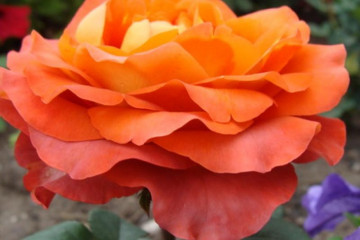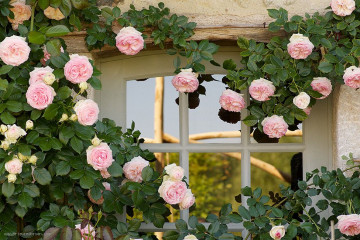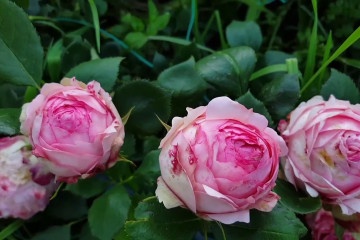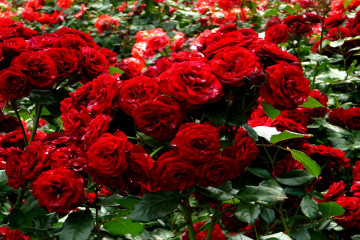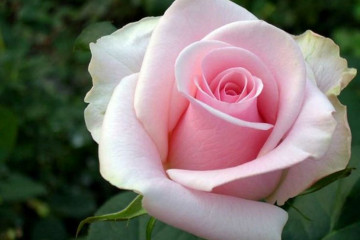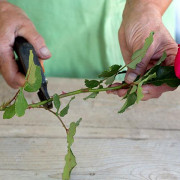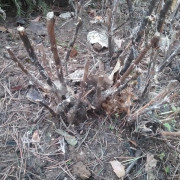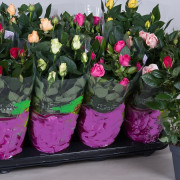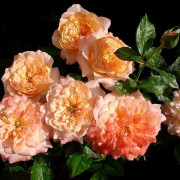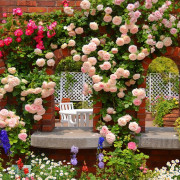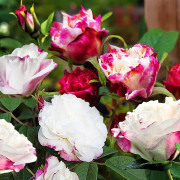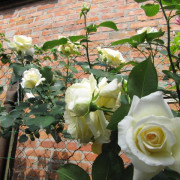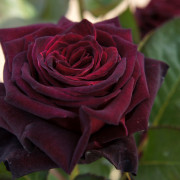Climbing rose Jasmine (Jasmina) - characteristics of a bush variety
Content:
Climbing rose Jasmina (Jasmina) is a profusely flowering hybrid cultivar created in the style of nostalgic English species. It belongs to the climber group, which is characterized by a large diameter of buds and tough, long shoots. The high decorative qualities of the shrub contributed to the growth of its popularity among gardeners all over the world, despite the fact that it was bred relatively recently. But in order to achieve abundant flowering of this rose, you need to properly plant and provide full care.
Climbing rose Jasmine (Jasmina) - what is this variety, history of creation
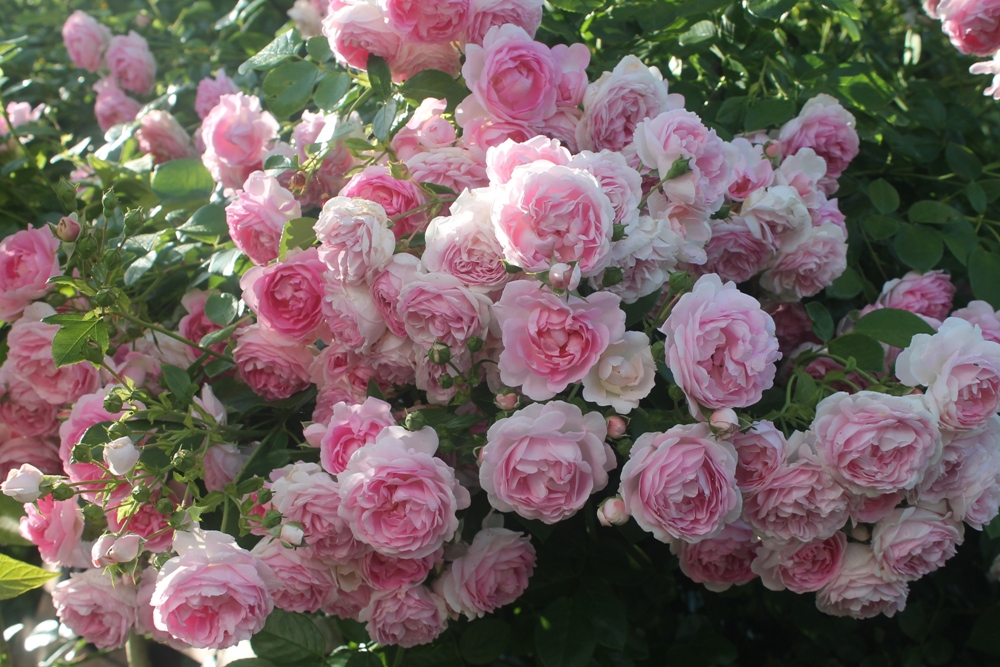
With full disclosure of the buds of the Jasmine variety, the middle does not bare
This rose was obtained thanks to the efforts of German breeders in 2005. The originator is considered to be the family company Kordes, which is engaged in the development of new unique types of culture.
Rose Jasmine was bred by chance, by crossing a seedling with a Santener de Lurde scrub. The resulting look was distinguished not only by thick large flowers, but also by a pleasant aroma, for which he was awarded a prize in 2007 in the Knight Rose Competition, which was held in France.
Brief description, characteristic
Jasmina is one of the best species according to the climbing rose encyclopedia. The variety is characterized by powerful long shoots, the height of which reaches 2.5-3 m. As the shrub grows, its crown becomes lush and dense.
- Leaves are medium in size, complex. Each of them consists of 5-7 separate segments, which are attached to one petiole. The length of the plates in this variety reaches 7-9 cm. They have a dark green color with a shiny surface.
- The shoots of the climbing rose Jasmine are powerful, flexible, densely covered with thorns. Therefore, gloves should be worn when caring for shrubs. Young branches are bright green in color, but as they mature, their surface dulls and takes on a brown-gray tint.
- The root system is superficial. The diameter of its growth is 50-70 cm, depending on the type of soil.
- The buds of this variety are large, with full disclosure their diameter reaches 5-7 cm. They are collected in apical brushes of 10-12 pcs.
Flowers of this variety are densely double, each of them consists of 75 petals. Their shape is cupped. When opened, the petals have a lilac-pink tint. Over time, under the influence of sunlight, it burns out, but at the same time the middle remains of a rich lilac color, which gives the impression of a two-color variety.
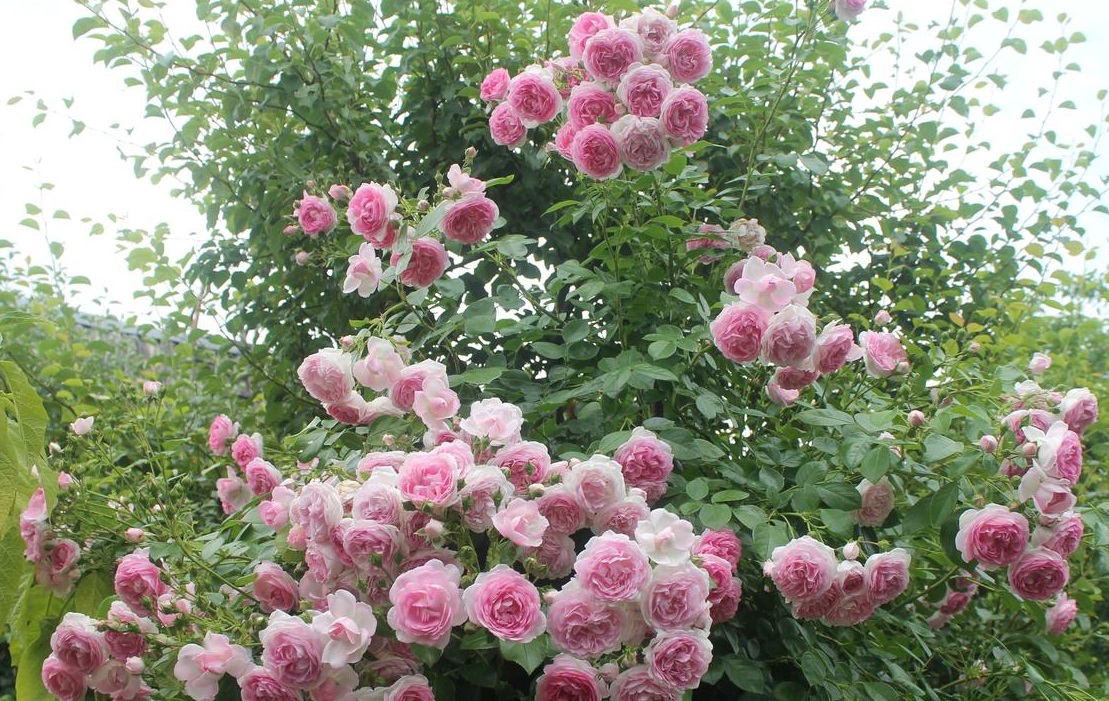
The diameter of the growth of bushes in Jasmine is 1.0 m
Jasmine rose during the flowering period exudes an exquisite delicate aroma that spreads to all corners of the garden. It combines shades of apple blossom, jasmine and apple without being intrusive.
This variety has high frost resistance and can withstand temperatures as low as -25 degrees. However, in regions with more severe climatic conditions, the shrub should be covered for the winter in order to preserve the shoots of the current year, which will bloom in the next season.
The variety shows average resistance to common diseases of the culture, therefore, it is necessary not to neglect the preventive treatment with fungicides in order to preserve the decorative effect of the plant throughout the season.
This species easily tolerates short-term drought, but in the absence of rain for a long time, it needs regular watering, especially during the period of budding and flowering.
Advantages and disadvantages of the variety
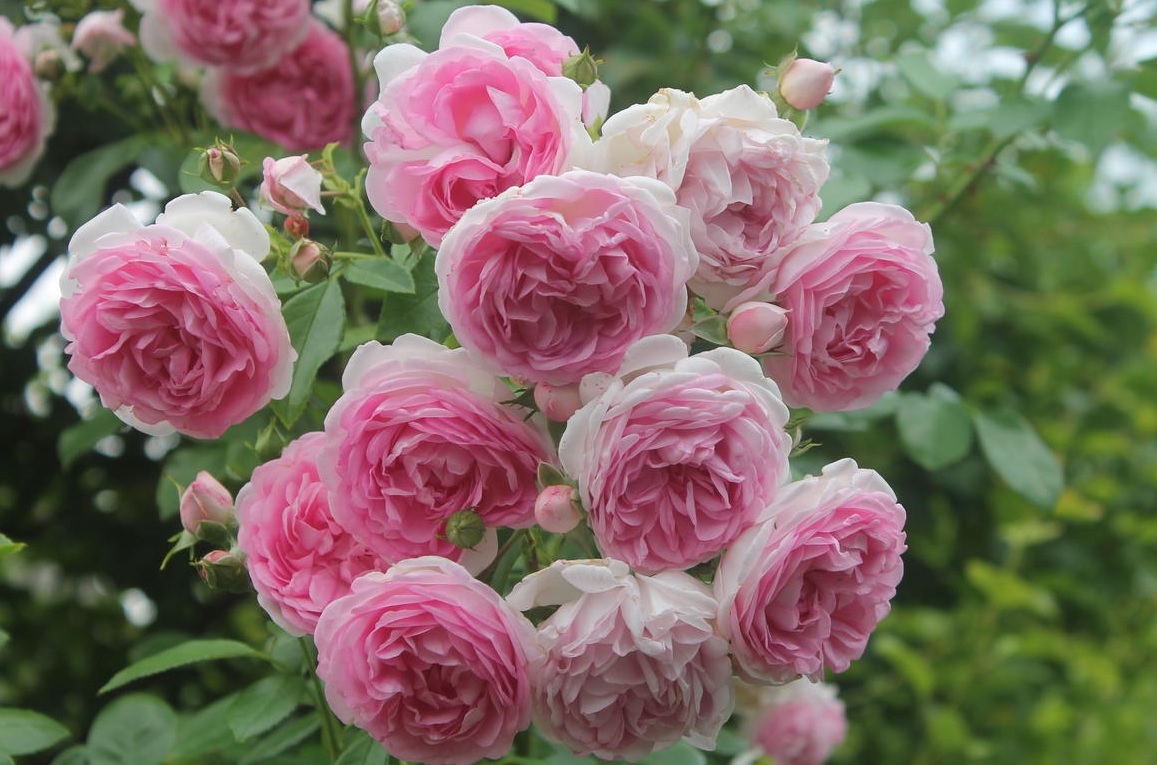
The buds of this variety remain fresh for 5 days.
Rose Jasmina has a number of advantages that make it stand out from others. But it also has certain disadvantages that should be taken into account.
Jasmine rose benefits:
- high frost resistance;
- abundant flowering;
- large bud diameter;
- unique shade of petals;
- pleasant aroma;
- undemanding care;
- suitable for cutting;
- breeds easily.
Disadvantages:
- does not tolerate drafts;
- medium resistance to rain;
- many thorns;
- can be affected by powdery mildew, black spot.
Use in landscape design
Rose Jasmine is ideal as a tapeworm. The bush looks good against the background of a green lawn, which successfully emphasizes the delicate shade and beauty of its buds. When combined with other species, it is necessary to select varieties with a dark color of flowers for her companions, which will allow them to successfully complement each other. In this case, shrubs with the same flowering period and crown size should be chosen.
When placing a Jasmine rose in a flower bed, it must be planted in the center or used to decorate the background. And below, annuals should be planted, which will help mask the bare shoots at the base. Features of the use of this variety in landscape design can be seen in any gallery of photographs widely presented on the Internet.
How to properly plant in open ground
In order for a rose of the Jasmine variety to fully develop and delight with abundant flowering every year, you need to choose a good place for it on the site and plant it correctly. Ignoring the basic requirements of a culture negatively affects its decorative qualities and can lead to death.
In what form is the landing
You need to plant a Jasmine rose only with seedlings. This will ultimately allow you to get a bush that will retain all the species properties. Attempts to grow a shrub from seed will fail as the variety is hybrid.
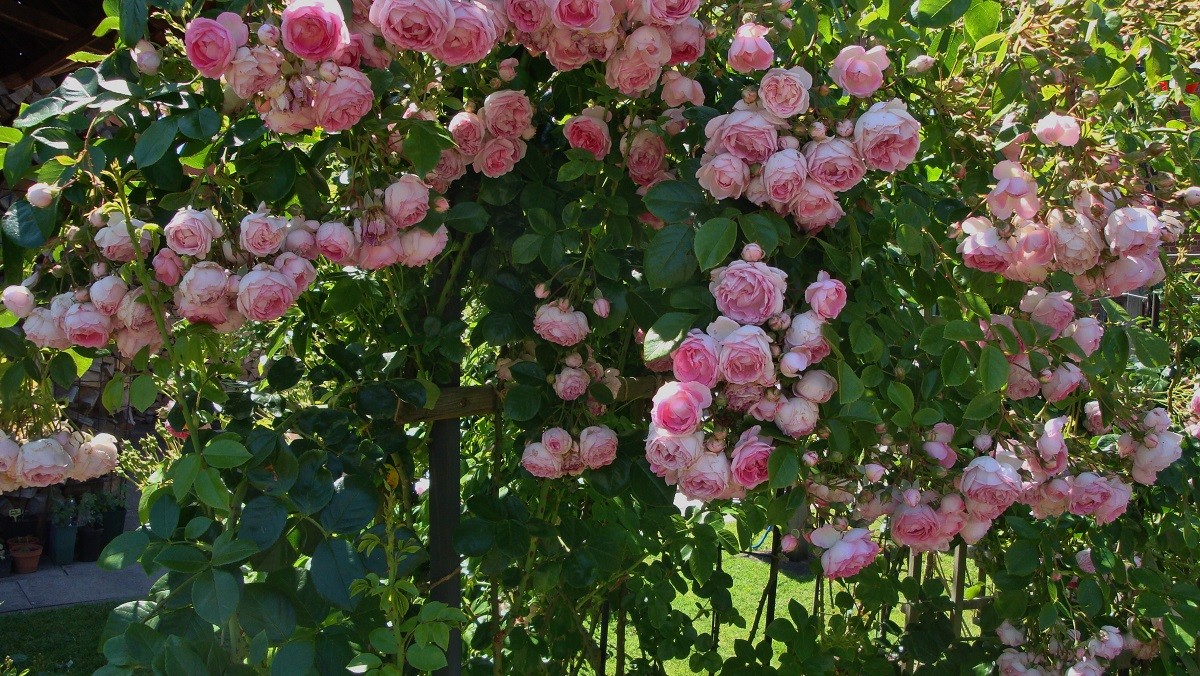
Two-year seedlings adapt the fastest to a new place
Optimal planting times
Experienced flower growers recommend planting a climbing Jasmine rose in the northern regions in spring. This requires that the snow melts and the soil thaws to a depth of 20 cm. This usually happens in late April or early May.
In the central and southern regions, planting Jasmine should be carried out in the fall, namely at the end of September, at the beginning of October. Such terms allow you to get a well-rooted seedling by the next season.
Choosing the best place
The shrub prefers to grow in open, sunny places, protected from drafts. But light partial shade at midday is also acceptable. In this case, the flowering period will come a little later and last longer.
The variety shows the maximum decorative effect on loamy and sandy loam soils with a low acidity level. It is important that the soil is rich in organic matter and has good aeration. But also this variety can be grown in clay soil, if you first add 10 kg of peat and sand per 1 sq. m. In this case, the groundwater level at the site must be at least 1 m.
Soil and seedling preparation
Two weeks before planting, the site should be dug up and a hole 60 by 60 cm in size should be prepared.A layer of broken brick should be laid at the bottom, and the rest of the volume should be filled with nutritious soil. To do this, you need to mix turf, peat, sand, humus in a ratio of 2: 1: 1: 1 and additionally add 40 g of superphosphate, 25 g of potassium sulfate.
A day before planting, the Jasmine rose seedling should be placed in water to activate metabolic processes.
Landing algorithm
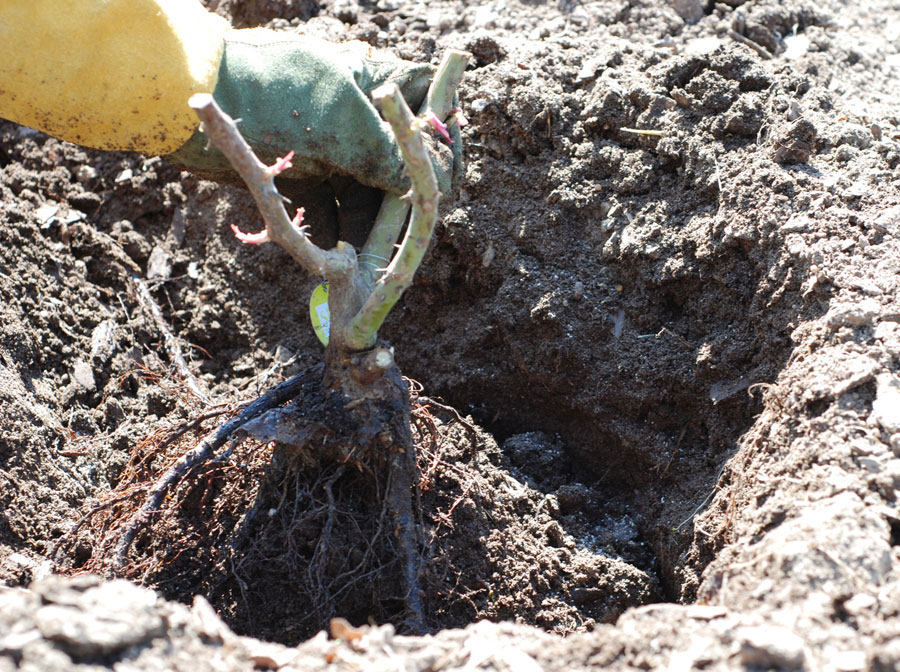
When planting, the seedling should not show signs of vegetation.
The procedure is carried out according to the standard scheme. Therefore, a gardener will be able to cope with it without many years of experience.
Procedure:
- Water the planting hole abundantly, wait until the moisture is absorbed.
- Place a seedling in the center, spread the roots.
- Sprinkle them with earth, fill in all the voids.
- Compact the soil at the base, water again.
Further care
When growing the Jasmine rose variety, you should adhere to the standard care rules. Therefore, you should familiarize yourself with them.
Watering
It is necessary to water the shrubs 1-2 times a week during dry periods, but at the same time do not allow stagnation of moisture in the soil. Moisturize with standing water under the root.
Top dressing and soil quality
You need to fertilize the rose several times per season. During the period of active growth of shoots and foliage, organic matter should be used. And during budding and after flowering, use phosphorus-potassium mineral fertilizers. In autumn, at the base of a climbing rose, you need to lay humus mulch, which will improve the composition of the soil.
Pruning and replanting
Annually in the spring, it is necessary to clean the crown from broken, damaged and thickening shoots. You should also shorten healthy branches to 5 buds, which will improve their branching.
Transplanting a shrub to a new place should be carried out in the fall, at the end of the growing season. To do this, you need to dig out the rose, shorten its shoots to 30 cm, and also cut the roots to a length of 20 cm. Then plant it immediately.
Features of wintering a flower
It is recommended to cover the shrub for the winter. To do this, it is necessary initially to lay mulch from peat or humus at its base. Then remove the shoots from the support, and lay them on the pine litter or branches. At the end, arcs should be placed over the rose and covered with agrofibre, fixing it to the ground.
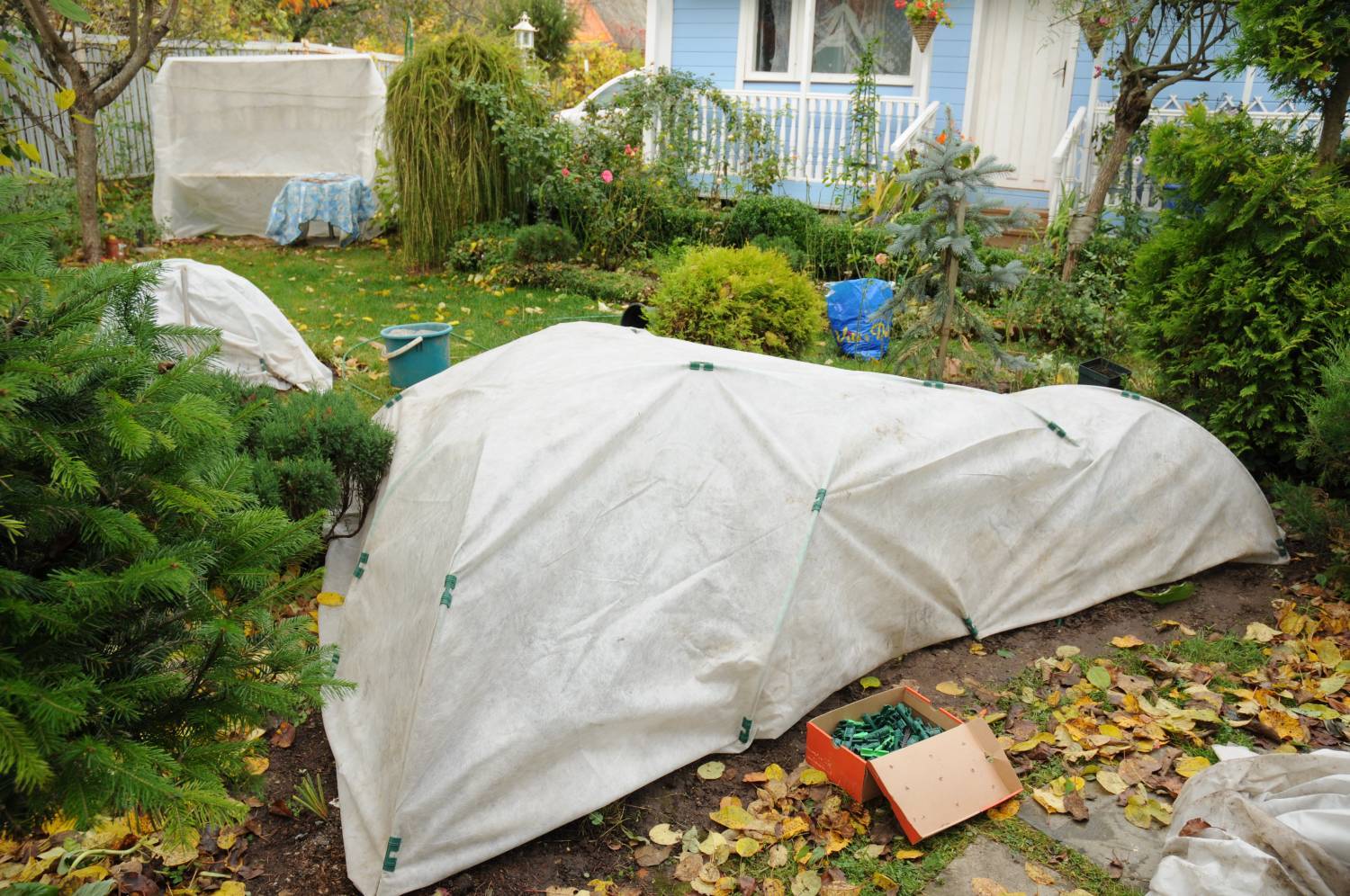
The covered rose easily tolerates not only frosty, but also snowless winters
Blooming rose
Jasmine is capable of delighting with lush flowering, subject to its requirements. But sometimes novice gardeners make mistakes that lead to a decrease in the decorative effect of the shrub. Therefore, you should study in advance the features of caring for a shrub, before and after flowering.
A period of activity and rest
Jasmine is a climbing rose with a repeated flowering cycle. The first time the shrub forms buds in late May-early June and continues for 30-40 days.
Care during and after flowering
During the flowering period, the Jasmine rose needs good watering. You need to irrigate the shrub 2 times a week, pouring 10 liters of water each. But after each moistening, the soil should be loosened to prevent root rot.
After flowering, it is necessary to clean the crown and feed the rose. To do this, use 40 g of superphosphate and 30 g of potassium sulphide per bucket of water. These fertilizers will help the plant to restore the expended strength and increase its frost resistance.
What to do if it does not bloom, possible reasons
Sometimes gardeners complain that this variety has poor flowering or is completely absent. This happens for a number of reasons.
Among them:
- placement in deep shade;
- increased acidity of the soil;
- excess nitrogen in the soil;
- damage to shoots during wintering.
To rectify the situation, it is enough to find the cause and eliminate it.
Flower propagation
This climbing rose variety is easy to propagate. Therefore, getting new Jasmine bushes will not be difficult.
Methods and Description
This hybrid variety propagates only vegetatively, namely by cuttings. To do this, young ripe shoots must be cut into pieces 10-15 cm long. Each of them must have 2-3 internodes.
After that, the resulting parts should be immediately planted in the ground, but at the same time remove the lower pair of leaves, and shorten the upper one by half. When planting, powder the lower cut of the cutting with any root former. At the end of the procedure, a mini-greenhouse should be installed on top of the cuttings. Throughout the season, seedlings should be regularly ventilated and watered, and covered with spruce branches and agrofibre for the winter.
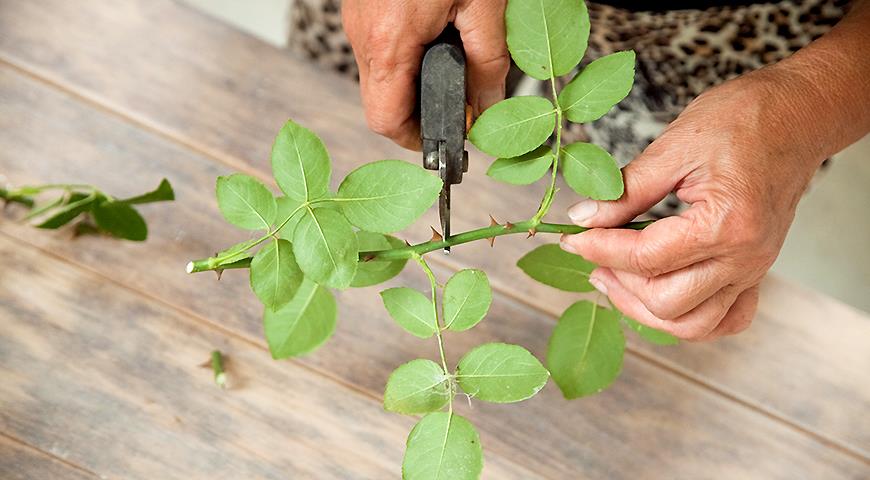
Cutting allows you to get a large number of seedlings
Diseases, pests and ways to control them
Climbing rose of the Jasmine variety exhibits medium resistance to powdery mildew and black spot. Therefore, in a rainy, cool summer, the shrub must be treated with "Fundazol" and Bordeaux mixture.
Of the pests, damage to the plant can be caused by aphids, which feed on the sap of young leaves and shoots. To combat it, you need to spray the rose at the first signs of damage with the drug "Actellik" or "Fitoverm".
Climbing rose Jasmine belongs to the category of varieties that cannot be lost even in a large collection. Its beautiful dense double flowers combined with a sophisticated aroma can leave few people indifferent. At the same time, the variety is undemanding to care, which only contributes to the growth of its popularity.
